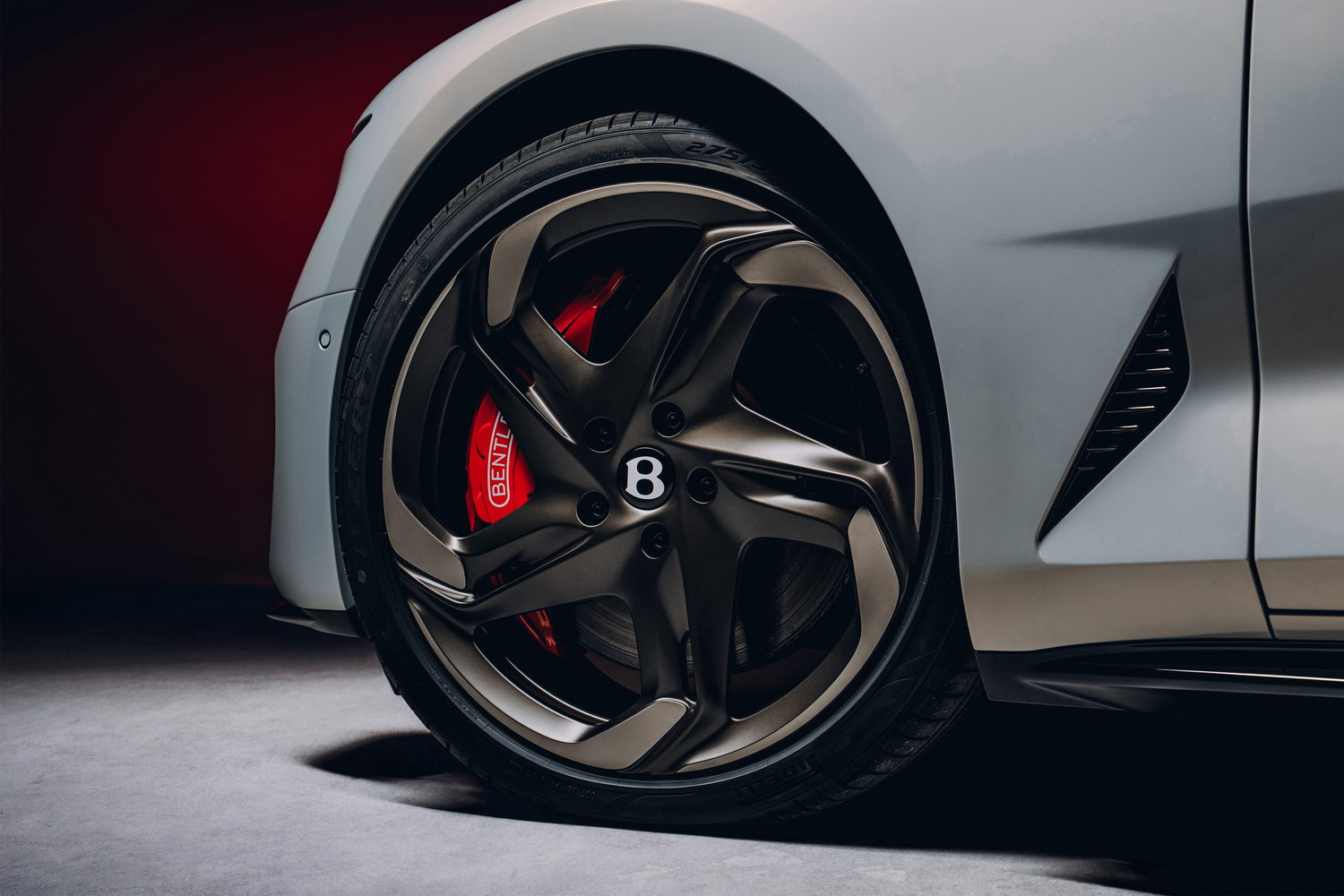Bentley has revealed the Mulliner Batur, a new two-door coupe built by the firm's special projects and coachbuilding arm, which, it says, previews the design language of the first electric vehicles due to arrive from the company in 2025.
What's powering the Mulliner Batur is, however, not an electric powertrain, but rather Bentley's big flagship 6.0-litre W12 engine in its most powerful form to date.
The Batur is the successor to Mulliner's last coach-built model, the convertible Bacalar, and, like the Bacalar (of which 12 examples were built), the Batur is also due to be made in minuscule numbers with just 18 units planned.
The design, explained
Speaking ahead of the Batur's reveal in Monterey, California, the car's lead designer, Andreas Mindt explained the reasoning behind the forms and shapes of the overall design, which will ultimately trickle down to more numerous models from the firm.
The Batur's flowing lines and haunches (not dissimilar to those already seen on Bentley's Continental GT) were, he said, inspired by animals at rest.
"The term we use is 'resting beast stance' - picture a lion or tiger lying low in attack position in long grass," explained Mindt. "That powerful shape - of ultimate power at rest, that looks fast even when stationary - is one that drives our new interpretation of the classic Bentley power line and haunch.
"A mark of power and prestige has always been a long bonnet. Our new design cues include a line that stretches from the bonnet along the whole length of the car, connecting the bonnet into the body, making the car long and lean and giving an elongated proportion to the front end. We call this feature the 'endless bonnet', and it's the only accent highlight to the cleaner shape.
"Meanwhile, the visual mass of the car is moved rearwards, giving the impression that the car is sat on the rear axle which adds further depth to the haunches.
"At the very front of the car, we've modernised the famous Bentley grille and made it lower and more upright to give a stronger face and more dominant stance. This upright elegance brings self-confidence with a luxury stance. The grille is flanked by a new headlight shape and design, an evolution of the design used on [the] Bacalar and maintaining the single large headlight either side.
"Overall, the form is cleaner and simplified, and we rely more on curvaceous surfaces bisected in the right places to reflect light and dark and bring more muscle to the design."
18-karat gold controls
As befitting its exclusivity, the Batur's interior is far more luxurious and expensively detailed than even that of the not-exactly-spartan Continental GT. There is a vast array of combinations of different leathers and wood veneers of course, but for the more eco-minded customer, those leather hides are sustainably sourced from Scotland and Italy and, for those not wanting leather at all, there's the choice of Dinamica, a man-made suede-like material.
So far, so Bentley, but it's the additional detailing that makes the interior of the Batur that bit more special.
For the switches and knobs, there's a choice of light, dark or titanium finishes with some of the controls even optionally available in 3D-printed 18-karat gold. Taking centre stage on the dashboard is an artistic laser etching of a sound wave design, based on the sonic signature of the twelve-cylinder engine.
Life in the old thing yet
That engine still appears, despite the company admitting that its days are numbered, to have some life and development potential left in it.
Its 740hp and 1,000Nm of torque represent a substantial jump in pulling power over the twelve-cylinder Continental GT Speed's 659hp and 900Nm of torque. This has been primarily achieved by the adoption of a new intake system, upgraded turbochargers, new intercoolers, a titanium exhaust system and extensive recalibration of the engine, with power being sent to the 22-inch wheels through an eight-speed double-clutch automatic gearbox.
Coping with the boost in power are the uprated braking, suspension and chassis systems, with the latter seeing adaptive three-chamber air springs giving the driver a full range of options in terms of ride firmness and body control through the car's driving modes system. Working in partnership with the air suspension is the electric active anti-roll system that can deliver up to 1,300Nm of anti-roll torque to keep the body stable and flat under hard cornering as well as decoupling the wheels at either end of each axle.
The brake discs are made from carbon-silicon carbide to help bring this fairly heavy car to a halt, employing ten-piston calipers up front and four-pots at the rear.
"Significant car for Bentley"
"The Batur is a significant car for Bentley," said the company boss, Adrian Hallmark, speaking ahead of the car's reveal.
"Far more than the heir to the highly successful Bacalar, the Batur showcases the design direction that we're taking in the future as we develop our range of BEVs. Andi Mindt and his team have reimagined the classic Bentley design cues into a stronger, bolder design that remains both elegant and graceful."
Prices for the Bentley Mulliner Batur, named after a crater lake on the island of Bali in Indonesia, start from around the €1.95 million mark. Predictably, all 18 examples have already been sold.
















